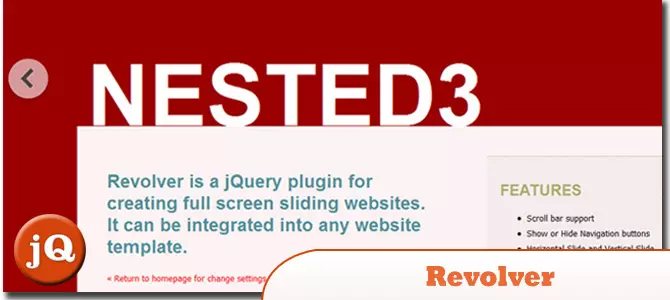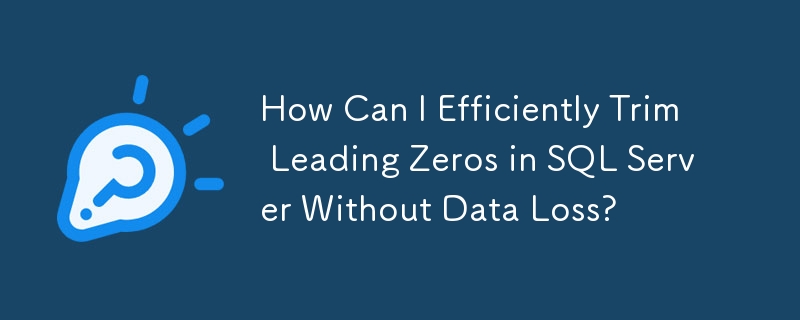Found a total of 10000 related content

How to Use the HTML5 Full-Screen API
Article Introduction:This article explores the HTML5 Full-Screen API, enabling web developers to present content in full-screen mode for enhanced user experience. The API offers methods for initiating and exiting full-screen mode, along with functionality to check its a
2025-02-25
comment 0
367

Using the HTML5 Fullscreen API
Article Introduction:The method of using HTML5's Fullscreen API to achieve full screen display of web page content is as follows: 1. Call the requestFullscreen() method of the element to enter full screen, but it must be triggered by user interaction; 2. Use document.fullscreenElement to determine whether it is currently in full screen state; 3. Call document.exitFullscreen() to exit full screen; 4. It is a method that can be encapsulated with prefixes for old browsers; 5. Listen to full screen change in response to full screen state changes. Mastering these key points can achieve full-screen control function.
2025-07-05
comment 0
506

12 jQuery Fullscreen Plugins
Article Introduction:12 amazing jQuery full screen plug-ins to create a fascinating website!
Sometimes, full-screen websites are really cool! If a website looks plain, how long do you think visitors will stay? So, we have prepared some good stuff to help you: 12 jQuery full-screen plugins that give your website a stunning full-screen responsive effect! These plugins will add extraordinary visuals to your website. Ready?
Related recommendations:
100 jQuery picture/content slider plug-ins
30 jQuery responsive layout plug-ins
Revolver
A jQuery plugin for creating full-screen sliding websites. It can be integrated into any website template.
Source code
2025-02-25
comment 0
560

Customizing controls for native HTML5 media players.
Article Introduction:To customize HTML5 media player controls, 1. First remove the native controls, remove the controls attribute or set to false; 2. Create custom UI elements such as buttons and progress bars, and use JavaScript to bind events to achieve playback/pause function; 3. Use the timeupdate event to update the playback progress and allow the user to drag and jump; 4. Use the requestFullscreen method to achieve full screen switching; 5. Full control of the style through CSS and adapt to responsive layout.
2025-07-02
comment 0
869

What are HTML5 semantic tags?
Article Introduction:Semantic tags improve readability and accessibility by clarifying the meaning of content. HTML5 semantic tags such as, , etc. can clearly express the content structure and meaning; they improve code maintenance and help screen readers and search engines understand page layout; for example, identify navigation areas and define subject content; common tags include (introduction content), (navigation link), (main content), (independent content block), (theme content group), (side related content), (copyright information); these tags optimize auxiliary technology interaction and reduce dependence on ARIA roles; or can still be used when there are no special needs for style control or structure.
2025-07-14
comment 0
594

Implementing Responsive Images using HTML Picture Element
Article Introduction:Elements are a native way to implement responsive images in HTML5. It allows the most appropriate image resources to be loaded according to factors such as the screen size, resolution, and direction of the device. Define multiple image sources and their corresponding media query conditions through tags. The browser will match and load pictures that meet the conditions in order, and finally use the tag as the default fallback. For example: when the device width is greater than or equal to 1024px, medium.jpg is loaded between 768 and 1023px, small.jpg is loaded if the device width is greater than or equal to 1024px. Compared with srcset, it provides more refined control capabilities, such as adapting to Retina screens, horizontal and vertical screen switching, completely different picture content, etc. Media checks should be set reasonably when using
2025-07-10
comment 0
451

What is a single page application SPA
Article Introduction:The SPA can change content without refreshing the page because it uses JavaScript to dynamically update the local content of the page, and implements it with the help of front-end framework and asynchronous loading technology. Its core mechanisms include: ① Request data from the server through AJAX or FetchAPI; ② Use front-end routes to manage URL changes; ③ Replace part of the content instead of full page overloading in existing pages. This mode is suitable for scenes such as backend management systems, social network interfaces, online editing tools, etc. that require frequent interaction, but attention should be paid to SEO optimization, home screen loading speed, memory management and browser compatibility. During development, it is recommended to use code chunking, evaluate whether SSR or static generation is introduced, and continuously monitor performance to ensure user experience and application stability.
2025-06-26
comment 0
1041

How to make a responsive website with HTML5 and CSS3?
Article Introduction:The key to making a responsive website lies in the reasonable cooperation between HTML5 and CSS3, and the core is to make web pages display well on different devices. 1. Use HTML5 semantic tags to build clear structures, such as, , etc., to make the code easier to read and facilitate search engine crawling; 2. Use CSS3 media query to achieve multi-device adaptation, and apply different rules by detecting screen width, such as setting breakpoints such as mobile phones and tablets; 3. Use elastic layout (Flexbox or Grid) to deal with alignment and arrangement issues, and ensure that the navigation bar and other content automatically adapt to the screen; 4. Set image adaptation, use max-width:100% and srcset attributes to ensure that the image does not destroy the layout and improve the loading effect. Mastering these four key points can achieve compatibility with multiple settings
2025-07-13
comment 0
495

Understanding Client-Side Rendering
Article Introduction:Client rendering (CSR) means that web page content is dynamically generated by the browser by executing JavaScript, rather than the server directly returning the complete HTML. Its core process includes: the browser first downloads the basic HTML file, then requests and executes JS code, and finally JS gets data from the API to fill the page. The advantages of CSR are fast page switching, clear front and back end separation, and suitable for high-interactive applications. But the disadvantages are that the first screen is slow loading, difficult SEO optimization, and rely on JS. Suitable for background systems, user dashboards, SPA applications; not suitable for SEO-sensitive, mass marketing or poor network environment scenarios.
2025-07-16
comment 0
123

How do HTML5 semantic elements improve web accessibility (a11y)?
Article Introduction:Semantic HTML5 elements improve accessibility by giving web page structure a clear meaning, helping assistive technologies such as screen readers to navigate more effectively. 1. Use , , etc. tags to provide a clear structure for the page, so that users can quickly jump to the main content or article list; 2. Elements mark the main navigation blocks to improve the predictability of the page layout; 3. Use title levels correctly (such as to) to create a compatible outline structure; 4. Semantic tags such as and defaults have barrier-free features, and enhance the user experience without additional code.
2025-06-28
comment 0
588

How to embed a video in HTML?
Article Introduction:There are two main methods for embedding videos in web development. 1. Use HTML5 tags to directly embed local or remote video files, support controls, autoplay, loop, muted and other attributes, and can provide various formats such as MP4 and WebM through tags. 2. When embedding YouTube or Vimeo videos, you can directly copy the iframe code provided by the platform and adjust parameters such as video ID, size and full screen functions. In addition, it is recommended to use CSS to implement responsive design, and ensure that the video is displayed adaptively on different devices by setting the .video-container container and its internal element styles, while paying attention to compatibility, automatic playback strategy and mobile adaptation issues.
2025-07-13
comment 0
343

How to center a div in HTML?
Article Introduction:There are many ways to center a div, depending on the centering direction and layout requirements. 1. The horizontal centering block-level div can use margin:0auto, but the width needs to be set and ensure that it is a block-level element; 2. The horizontal and vertical centering can be achieved at the same time with Flexbox, and the container alignment is set through display:flex, justify-content and align-items; 3. The complete centering is achieved using CSSGrid, and the code is simplified through place-items:center; 4. The classic positioning method is suitable for old browsers, and the full screen positioning is achieved by combining absolute positioning with transform:translate (-50%,-50%).
2025-07-13
comment 0
181

What are the benefits of using HTML5 semantic elements?
Article Introduction:There are three main benefits of using HTML5 semantic tags: improving accessibility, benefiting SEO, improving code structure clarity and team collaboration efficiency. First, semantic tags such as, etc. help screen readers understand the page structure and improve the user experience of visually impaired users; second, search engines can more accurately capture content structure and focus, which may improve search ranking; finally, semantic structure makes it easier for team members to understand page layout and improve development and maintenance efficiency. At the same time, we need to pay attention to the rational use of semantic labels to avoid abuse or misuse and ensure that they truly play the role of structural expression.
2025-07-02
comment 0
465


Dave The Diver: How To Catch Spider Crabs
Article Introduction:In Dave The Diver, there are some creatures that are not easy to catch. Or, catch alive that is. The spider crab is one of those very species, making it seem like the only way to bring these crustaceans back up to land is to viciously crack them up w
2025-01-10
comment 0
809

Prepare for Interview Like a Pro with Interview Questions CLI
Article Introduction:Prepare for Interview Like a Pro with Interview Questions CLI
What is the Interview Questions CLI?
The Interview Questions CLI is a command-line tool designed for JavaScript learners and developers who want to enhance their interview
2025-01-10
comment 0
1437



















